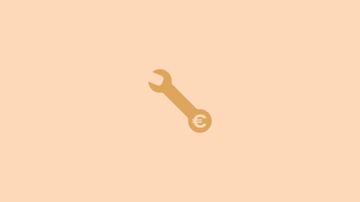
Make 2023 the year you strengthen your saving habits
There are four stages to becoming a lifelong saver. Here’s how to secure your financial future, step-by-step.
5 min read
What better way to start the new year than to make 2023 the year you develop some saving habits that stick? The trick is to start small. Saving money requires practice, patience, and perseverance. However, if you can master it, it will quite literally pay off in both the short and the long term. If you don’t know what to start saving towards first, here’s our tried-and-true list of savings goals to help you reach financial independence—step-by-step. Let’s go!Cultivating saving habits and taking control of your financial future are important steps towards financial freedom. But before you dive in, it’s a good idea to think strategically about how and where to start. And you’re in luck: We put together a checklist of different savings goals to help you make an action plan. Each milestone builds on the ones before, prioritizing your financial health and security while also maximizing your odds of reaching all of your goals. Here’s where to start—and where to go from there!Before you can start seriously saving towards other goals, it’s wise to pay off any outstanding debt. If you start contributing to other savings targets before becoming debt-free, you could end up losing more money in the long run since your debt is still accruing interest. To tackle your debt head-on, first create a detailed budget to understand how much money you have coming in and going out of your account each month. Then, you can identify areas where you could cut back, and redirect that amount toward paying off your debt.If that sounds overwhelming, don’t panic just yet. There are two budgeting methods specifically to help individuals get out of debt: The debt snowball and the debt avalanche methods. While the debt snowball method encourages you to pay off your smallest debts first, the avalanche method suggests that you tackle the debts with the highest interest rates first. Both approaches have benefits and disadvantages, but the most important thing is to choose the method that works best for you and your circumstances.Once you’re debt-free, you can start saving towards a safer financial future. This means saving up for an emergency fund that’s large enough to support you in difficult situations, such as job loss, natural disaster, death, or illness. Living paycheck to paycheck is a reality for so many people, but one that comes with significant risk. Having an emergency fund acts as a financial buffer. Plus, it can help people avoid taking on new debt when things don’t go as planned. We can’t predict what’s going to happen in the future, but we can give our future selves financial resources to help us better weather whatever storms may come our way. An emergency fund should include between three to six months' worth of your fixed monthly expenses. This means any regular payments that are classified as “essential,” such as your rent, bills, and insurance payments. More ambitious savers might aim to save between three to six months' worth of their monthly salary after tax to ensure they have all their bases covered. Either way, as you grow your emergency fund, you’ll also cultivate a money-saving mentality that will help you progress to the next tier of saving habits.Now that you’re debt-free and have a sizable emergency fund, it’s time to start setting some short-term savings goals. Starting small is the key to building solid, lifelong saving habits. A short-term savings goal could include saving for a household appliance, a weekend getaway, or equipment or classes for a new hobby. Essentially, your goal can be anything that you can reasonably save up for within six months to a year. To make saving an essential feature of your life, it’s a good idea to get to grips with budgeting. A great place to start is the 50/30/20 budget, especially if you’re new to budgeting. Here’s how it works:Once saving has become a fixed habit, it’s time to set some long-term savings goals. Long-term savings goals include saving up for large expenses such as a big holiday or a downpayment on an apartment, or setting up monthly pension contributions. One of the simplest ways to build long-term saving habits is to set up automated contributions to your savings. Money is automatically transferred from your daily spending account to your savings account each month—without you lifting a finger. Achieving long-term savings goals takes time. In the case of pension contributions, it could take over 50 years! Gradually, however, as your money is automatically moved to your savings account each month, you’ll begin to see this portion of your income as an unavailable resource—at least, until you reach your goal. This can motivate you to be more creative with the money you have in the rest of your budget. Plus, it can be a great motivator to work toward short-term and long-term goals at the same time. Achieving your short-term savings goals can feel like an easy win, which can bolster your belief in your long-term contributions. Ultimately, it’s about developing saving habits that keep you focused on securing your financial future.
The simplest way to create good saving habits? Create a dedicated savings account with N26 where you can watch your savings fund grow. N26’s Spaces sub-accounts allow you to create multiple savings accounts and set savings goals for each of them. With our online bank account, not only can you set daily spending limits, but you’ll also receive push notifications right after each transaction, so it’s easier to keep to your budgeting goals. Plus, N26 offers all the benefits of a budgeting tool, helping you smash your savings targets and get the most out of your money.
The step-by-step guide to saving
1. Eliminate debt
2. Save for an emergency
3. Set short-term savings goals
- 50% of your gross income goes towards your fixed costs, i.e. your essential expenditures such as rent and bills.
- 30% goes towards your variable costs, i.e. non-essential purchases such as gym subscriptions and nights out.
- 20% goes towards your savings goals.
4. Create some long-term savings goals
Set and meet your savings goals
Find similar stories
BY N26Love your bank
Related Post
These might also interest youBUDGETINGBudgeting tools to get your finances on trackBudgeting tools demystify the budgeting process. Read on to find out how.
7 min read
BUDGETINGWhat to include in your family budget Budgeting for the family can feel like a chore, but with a few simple adjustments, it can also be empowering! Read on to discover how to create a family budget the easy way.
5 min read
BUDGETINGMoving in together: tips to manage monthly expensesMoving in with your partner means budgeting together. Read our guide on how to budget for your new home and live in harmony.
5 min read


